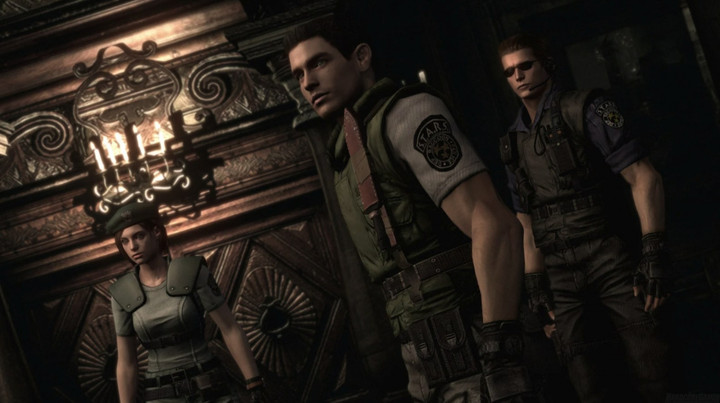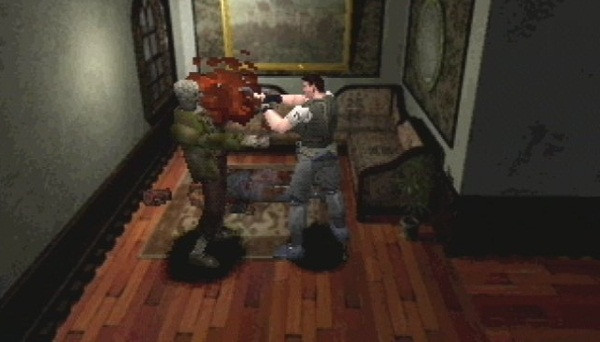Since Resident Evil released on the PlayStation in 1996, the franchise has been a consistent source of experimentation. The mainline entries are defined by their shifts in view, from the original trilogy's fixed camera angles, the shift to over-the-shoulder action in Resident Evil 4, before the seventh entry brought the horror back via a first-person perspective.
Like the franchise's multiple character paths, these entries however only tell half the story. There’s flawed multiplayer spin-offs, rail shooters, underrated side stories like Code Veronica and Revelations, forgotten handheld entries, along with an expanding branch of remakes which have (mostly) set an industry standard of how to restore classics for modern audiences.
Each version of Resident Evil’s classic titles represent a new, unique challenge for the franchise’s speedrunning community. The player base, who welcome new runners through their Discord server, have become a staple at the sport’s biggest semiannual event Games Done Quick; where top runners livestream titles to raise money for charity.
Speedrunning is associated with glitches and out of bounds tricks which skip entire sections, but for the most part, Resident Evil runs are beeline dashes through puzzle box design. You’re rushing between keys, jewels and other key items while contending with enemy AI, who can easily end a run with one unfortunate, lumbering grab. This is heightened in Resident Evil 2 and Resident Evil 3, which throws stalking enemies like Mr. X and Nemesis into the mix for a chaotic fight against RNG (random number generator) algorithms.
Resident Evil celebrates its 25th anniversary this year (Picture: Capcom)
For years, these sequels were the most popular among Resident Evil speedrunners. It wasn’t until the release of a fan-made patch for the 1996 Resident Evil, which optimised the PC version, when the original became a viable speedrunning title. Further stability and performance enhancements came in an additional REbirth patch by mod GeminiLoboto, released in 2019, which has become the standard for anyone doing runs today.
Clix_gaming, 38, has been speedrunning 1996 Resident Evil since 2014, and consistently tussles for world records at the top of the pack. Over the years, he’s seen the game's popularity grow immensely, as top times get shorter and subtle changes creep into the best route.
“For the most popular category, Jill Any% with no major glitches, there has been one major route change when I first started. But other than that the route really hasn’t changed,” he tells GINX Esports TV. “The changes are the smaller optimisations; how to save a little half a second here, or a few frames here. That has changed tremendously.
“The way we do our menus has changed. These small bits of time add up to seconds and seconds. Then on top of that, just getting better over time; cleaning up movement, learning how to hit a door trigger early, just to save a few frames. All of these micro executions add up to a lot of time.”
While there’s been little drastic changes to affect the best time in the Jill Any% category, which currently sits at 38 minutes and six seconds, it’s the explosion in competition, thanks to the available patch, which has kept things fresh.
“It’s just blown up in the past year and a half with the help from the REbirth patch,” clix_gaming says. “We have a lot of really high level runners, and high level runners in other games, coming over to Resident Evil and seeing what they can do.
“The competition is a big thing but also, I still haven’t done my best. I can still beat my time and that also keeps me going, regardless of where the other runners are. I want to see just how fast this game can be completed regardless of who does it. I don’t think I’ll ever be done until I feel like I just can’t improve anymore. That’s the main thing that keeps me going.”
There’s an impressive amount of variables within Resident Evil speedrunning too. In the original, the choice between Jill Valentine and Chris Redfield, which grants access to different routes, weapons and inventory sizes, presents new challenges specific to each. Chris, for example, has a bigger hitbox to contend with, making him an easier target for zombies wandering the mansion, so runners have to adjust their movement accordingly.
There’s the HD remake too, for those who don’t want to contend with the original’s maligned tank controls. This version is longer due to some expanded sections, including a new graveyard sequence and Lisa’s cabin. It also opens up new speedrunning manoeuvres like stair skating, whereby players quickly fly down or up staircases by repeatedly cancelling out the animation. It looks comical in practise, yet it became surprisingly contentious within the community, after players expressed concern the repeated motion of holding up on the D-pad and mashing run as fast as possible, could strain or cause injury.

Certain players devised an alternative by remapping the controls, so spinning the right analogue stick would perform the same move. A debate ensued within the community over if this cheapened the tactic and made it too easy. The solution, decided as a collective, was to allow analogue stair skating but only in the Door Skip category — where players use a mod to remove the door opening animations. In all other categories, runs have to use the original, button-mashing technique.
The amount of variables in runs for Resident Evil Remake is huge, with 48 categories in total split between platforms, characters, difficulty modes, alternate endings and more. It’s the most of any Resident Evil game, which typically have less than 20.
While major discoveries for refining the best route, like the 1996 version, rarely come around, the sheer amount of categories for Resident Evil Remake provides plenty of incentive to keep runners coming back.
“I definitely feel like there’s new blood,” Resident Evil Remake speedrunner, Pessimism, 30, tells GINX Esports TV. “I’m sure there’s some people who enjoy trying to make up new routes for speed runs, but my minds on the leaderboards and there’s new runs like every other day. Sometimes I log on when I get off work and there’s five or six runs to check out, so I’d definitely say [Resident Evil Remake] is doing well in terms of activity. I’m sure there’s some people who might lose a little interest though, as the route is pretty much set.
“Competition is the thing that keeps me coming back to it. I love optimising runs and I want Resident Evil Remake to be as optimised as possible.”
Pessimism currently holds every world record across every category in Resident Evil Remake. He was first introduced to the franchise, and speedrunning generally, through Resident Evil 2 on the Nintendo Gamecube. Since then, he’s become one of the most prominent figures in the community, doing runs across Resident Evil Remake, Resident Evil Zero, Resident Evil Code: Veronica X, and more at various events.
Like many runners, his passion for Resident Evil has allowed him to travel and connect with people around the world — including visits to Norway and Sweden for the European Speedrunner Assembly. The dedication to one particular franchise might bewilder some, but it’s the collective experience of friendly competition and support from a like-minded community that drives their enthusiasm.
“There’s never been a game that’s had such an impact on my life,” clix_gaming says. “Not just playing it and how much I enjoy it, but the community that it’s brought me into, all the friends I’ve made. It's the staple of my Twitch channel so it’s a big part of me in that regard as well.
“To me, it’s an outlet I can use to push myself as far as I can possibly go to see what I can do in a game that I’ve gotten so good at over time. The recognition, love and support you get from your fellow community, that’s what Resident Evil is to me.”
You can check out the Resident Evil speedrunning community on Speedrun.com, or sign up to their Discord.

 No ads, our video library,
No ads, our video library,


